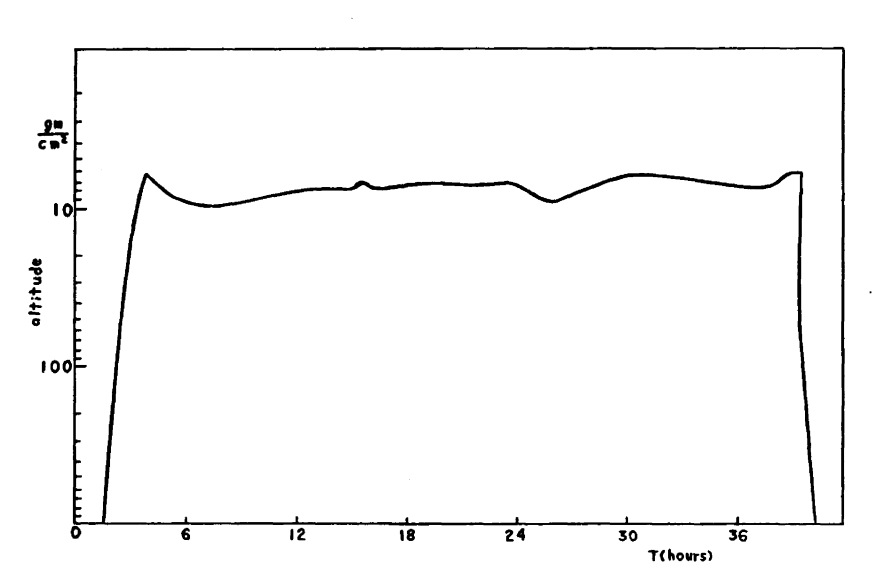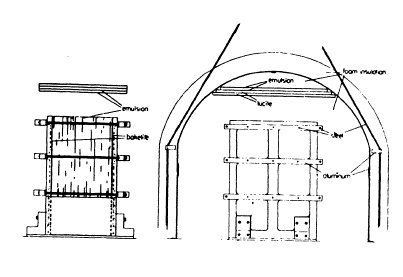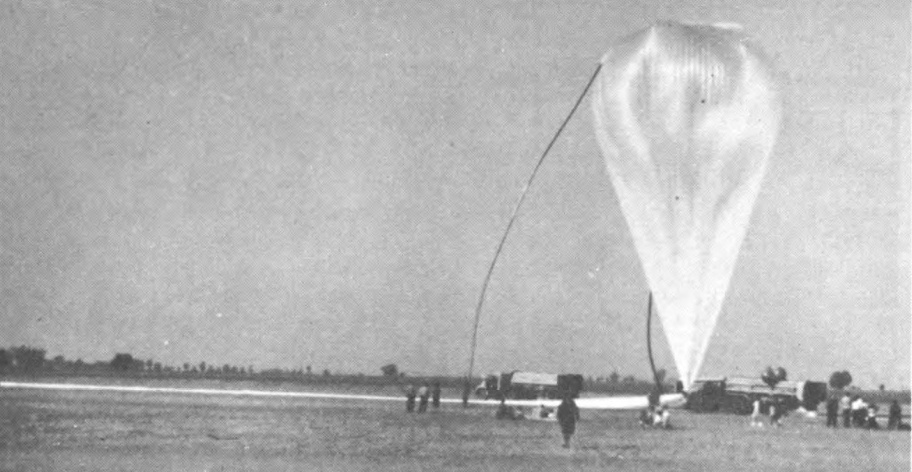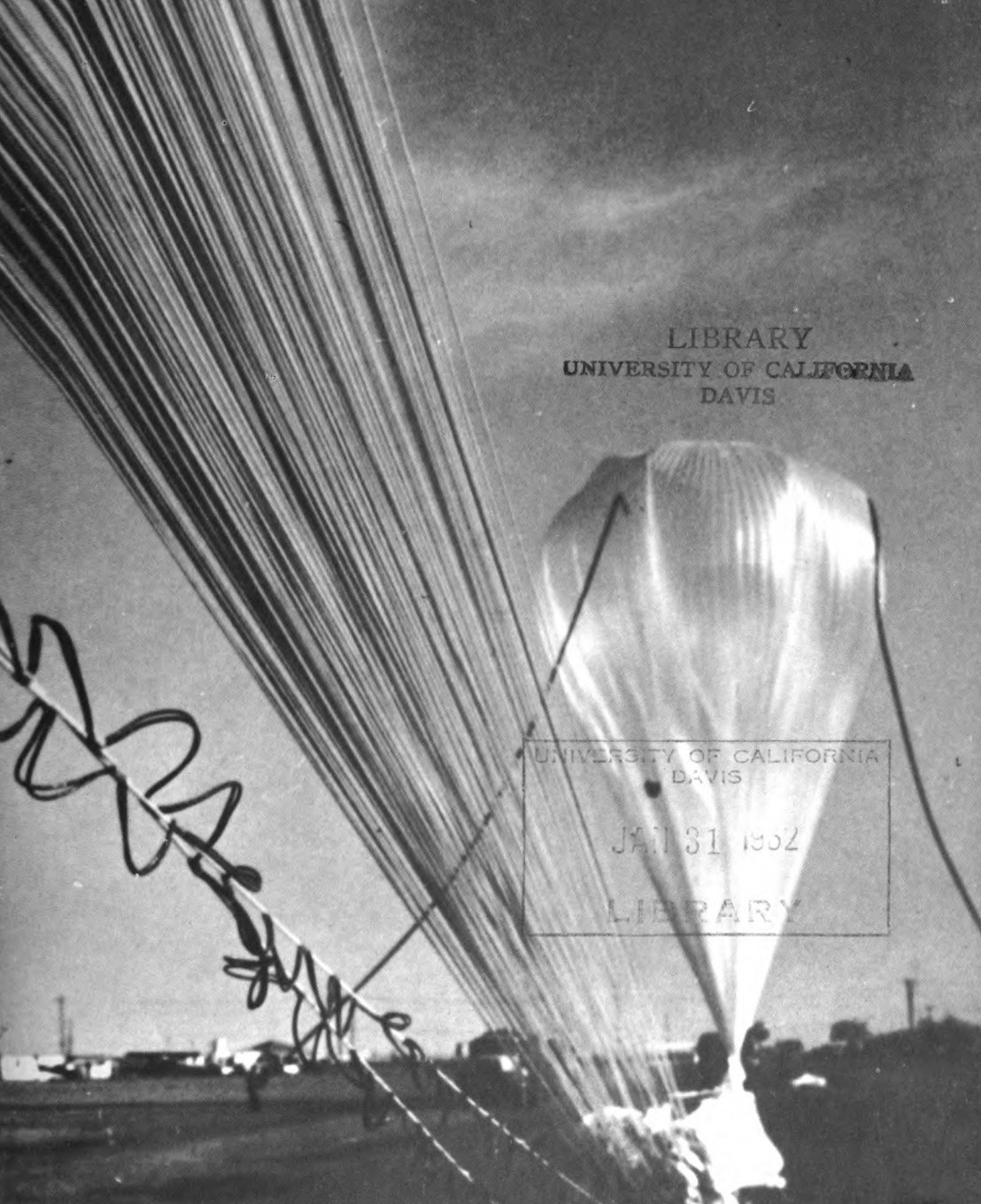Purpose of the flight and payload description
Project ICEF (International Cooperative Emulsion Flights) was an international research effort sponsored jointly by the National Science Foundation and the Office of Naval Research, originally under the direction of Dr. Marcel Schein, professor of physics at the University of Chicago, and later by Dr. Masatoshi Koshiba. The objective of the experiment was to expose in the stratosphere during long periods a gondola containing emulsion plates to track the path of particles nuclei created by the collision of cosmic rays: when these hit the fine-grain emulsions, they leave microscopic trails, or marks as fingerprints of known or new particles. The collisions could also indicate much about the cosmic ray which created the explosion.
The emulsion plates used for the experiment were composed by a stack of 500 special photographic emulsions K.5 made by the Illford London firm, measuring 18 x 24 inches, conforming a block weighting near 400 kg. The block was contained in a sealed cilindrical shape gondola made of aluminum, measuring 7 ft long and 3 ft of diameter with a total -full loaded- weight of 800 kgs. At right we can see a basic scheme of the payload (click to enlarge).
For this particular flight, the only modification made on the experiment from previous missions was the addition of a fragmenter conformed by horizontal layers of Lucite and emulsions above the main emulsion stack as a way of improving the data on the interactions caused by primary nucleons resulting from fragmentations of high energy heavy nuclei. Also, to reduce the number of interactions on the emulsion produced by lower-energy particles, the flight was conducted in the southern part of United States, where the earth's magnetic field was effective in filtering out these lower energy particles.
Details of the balloon flight

Balloon launched on: 11/19/1961
Launch site: Brawley Municipal Airport, California, US
Balloon launched by: Raven Ind.
Balloon manufacturer/size/composition: Zero Pressure Balloon Winzen - 10.000.000 cuft - Reinforced cap
End of flight (L for landing time, W for last contact, otherwise termination time): 11/20/1962
Balloon flight duration (F: time at float only, otherwise total flight time in d:days / h:hours or m:minutes - ): 38 h
Landing site: Near Hickory, North Carolina, US
The balloon was launched by dynamic method from the Brawley Municipal Airport on November 11 1961.
Once released the balloon ascended to an altitude of about 110.000 feet and started an eastward flight path across the southern part of the United States. After 38 hours, a preset timer terminated the flight and the payload was separated from the balloon.
The emulsion stack was recovered unharmed near Hickory, North Carolina.
External references
- High energy jets produced by heavy primary nuclei of cosmic origin and their fragmentation products Proceedings of the 9th International Cosmic Ray Conference, Vol. 1, p.844
- ICEF experiment succesfully flown Naval Research Reviews, January 1962, Pag 14
- Interactions of Heavy Nuclei Having Energy Greater Than 1000 Gev PH.D. Thesis by Raymond Lee Fricken, Louisiana State University (1963)
- Investigation of 1011 eV interactions 11th International Conference on Cosmic Rays, Budapest, 1969, Vol.3 p.107
- Recent large stack investigations of high energy jets 8th International Cosmic Ray Conference, 1963, Vol. 5, p.293
- Scientific Ballooning Nº 2, January 1962, Pag. 4
- The Chemical Composition and the Energy Spectrum of Heavy Nuclei in the Cosmic Radiation above 10 GeV/nucleon J. Phys. Soc. Jpn. 30 (1971), 1535
- The Interaction Mean Free Paths and the Fragmentation Probabilities of Cosmic Heavy Nuclei at Energies Above 10 GeV/Nucleon J. Phys. Soc. Jpn. 30 (1971), 1243
11887If you consider this website interesting or useful, you can help me to keep it up and running with a small donation to cover the operational costs. Just the equivalent of the price of a cup of coffee helps a lot.




